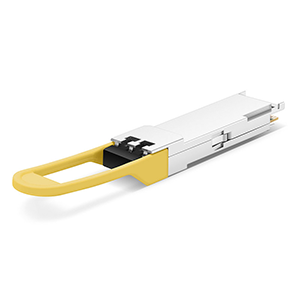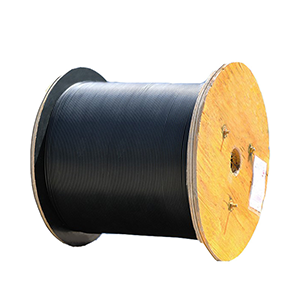In this article, I will take an in-depth look at SFP optical modules, a powerful fiber optic transmission device. We will introduce the definition, functions and application areas of SFP optical modules to help you understand its importance in modern communication networks. As a high-performance photoelectric conversion module, SFP optical module has fast data transmission, reliable signal transmission and wide applicability. Let us explore the wonderful world of SFP optical modules together!
what is sfp transceiver
SFP optical module (Small Form-Factor Pluggable) is a miniaturized optical module used for optical fiber communication and data transmission. The following is an introduction to the definition, function, structure and components of SFP optical modules:
- Definition and function:
SFP optical module is a modular optical transmission device that can be connected to the optical fiber interface of network equipment through plugging and unplugging to realize optical fiber communication and data transmission. It is a hot-swappable optical module that provides flexibility and replaceability, allowing network equipment to adapt to different fiber types, speeds and distance requirements.
The function of the SFP optical module is to convert electrical signals into optical signals and transmit them through optical fiber media. It is widely used in data communications and networking fields, including Ethernet, Fiber Channel, wireless base stations and data centers.
- Structure and components:
The SFP optical module consists of the following main components:
-
Housing: The housing of the SFP optical module is a miniaturized metal or plastic housing that protects the internal components and provides the correct size and interface for insertion into the fiber optic interface of the network device.
-
Fiber Interface: The SFP optical module has an optical fiber interface and is used to connect optical fiber transmission media. Fiber optic interfaces typically use LC or SC connector types, depending on the module design and application requirements.
-
Electrical Interface: The electrical interface of the SFP optical module is used to connect the electrical signal transmission between the optical module and network equipment. The electrical interface usually uses metal pins or sockets to enable the optical module to exchange and communicate electrical signals with the device.
-
Optical transceiver (Transceiver): The core part of the SFP optical module is the optical transceiver, which includes photoelectric converters and electro-optical converters. Optical transceivers convert electrical signals into optical signals for transmission through optical fibers, or convert optical signals into electrical signals for reception and decoding.
-
EEPROM (Electrically Erasable Programmable Read-Only Memory): The SFP optical module also contains an EEPROM chip, which is used to store the identification information, performance parameters and configuration data of the module. EEPROM allows network devices to read and identify the module’s type, speed, fiber type and other important information.
In summary, the SFP optical module is a miniaturized optical module used for optical fiber communication and data transmission. It consists of housing, optical fiber interface, electrical interface, optical transceiver and EEPROM. The structure and composition of the SFP optical module enable it to be flexibly plugged and unplugged in network equipment and provide replaceability and adaptability to meet different fiber types, speeds and distance requirements.
Overview of the working principle of SFP transceiver
SFP optical module (Small Form-Factor Pluggable) is an optical transmission device used to convert electrical signals into optical signals and transmit them. The working principle of the SFP optical module will be explained in detail below, including the photoelectric conversion, electro-optical conversion and signal transmission processes, as well as its sending and receiving functions.
How it works:
Optical to Electrical Conversion:
- Sending process: At the sending end, the SFP optical module receives the electrical signal from the network device. First, the electrical signal enters the optical transceiver through the electrical interface. The electro-optical converter in an optical transceiver converts electrical signals into optical signals.
- Receiving process: At the receiving end, the optical signal is transmitted to the SFP optical module at the receiving end through optical fiber. The optical signal enters the photoelectric converter in the optical transceiver, which converts the optical signal into an electrical signal.
Electrical to Optical Conversion:
- Transmitting process: At the transmitting end, the electro-optical converter in the SFP optical module converts the received electrical signal into an optical signal. Optical signals are transmitted through optical fibers.
- Receiving process: At the receiving end, the optical signal is transmitted to the SFP optical module at the receiving end through optical fiber. The optical signal enters the electro-optical converter in the SFP optical module, which converts the optical signal into an electrical signal.
Signal transmission process:
- Sending process: At the sending end, the photoelectric converter in the SFP optical module converts the electrical signal into an optical signal and transmits it to the receiving end through the optical fiber.
- Receiving process: At the receiving end, the optical signal is transmitted through the optical fiber to the photoelectric converter in the SFP optical module at the receiving end, and the optical signal is converted into an electrical signal. The electrical signal is then sent to the network device through the electrical interface.
Sending and receiving functions:
The SFP optical module has transmitting and receiving functions, allowing it to act as a transmitter and receiver in fiber optic communications.
-
Sending function: The sending function of the SFP optical module involves converting electrical signals into optical signals and transmitting them through optical fibers. It receives electrical signals from network devices, converts them into optical signals using an optical-to-electrical converter, and then transmits them to the receiving end through optical fiber.
-
Receiving function: The receiving function of the SFP optical module involves converting optical signals into electrical signals and sending them to network devices. It receives the optical signal from the optical fiber and converts it into an electrical signal using an optical-to-electrical converter, and then sends the electrical signal to the network device through the electrical interface for further processing.
By combining the processes of photoelectric conversion and electro-optical conversion, SFP optical modules can realize conversion and transmission between electrical signals and optical signals, thereby realizing the functions of optical fiber communication and data transmission.
In summary, the working principle of SFP optical modules involves photoelectric conversion and electro-optical conversion processes. It converts electrical signals into optical signals for transmission, and converts optical signals into electrical signals for reception. By combining these processes, SFP optical modules can realize conversion and transmission between electrical signals and optical signals, and realize the functions of optical fiber communication and data transmission.
Overview of SFP optical module types and specifications
SFP optical modules (Small Form-Factor Pluggable) come in many different types, including SFP, SFP+, SFP28, etc. The following is an explanation of the characteristics, data transmission rate and applicable scenarios of each type, as well as the specifications and parameters of the SFP optical module:
SFP (Small Form-Factor Pluggable):
- Features: SFP is the earliest SFP optical module introduced. It uses LC optical fiber connector and is smaller in size.
- Data transfer rate: SFP modules typically support data transfer rates of 1.25 Gbps (gigabits per second).
- Applicable scenarios: SFP modules are commonly used in fields such as Ethernet, Fiber Channel and storage area networks, and are suitable for short-distance data transmission needs.
SFP+ (Enhanced Small Form-Factor Pluggable):
- Features: SFP+ is an upgraded version of SFP, maintaining the same form factor but supporting higher data transfer rates and lower power consumption.
- Data transfer rate: SFP+ modules typically support data transfer rates of 10 Gbps (gigabits per second).
- Applicable scenarios: SFP+ modules are widely used in high-speed data transmission scenarios such as 10 Gigabit Ethernet, Fiber Channel and storage area networks.
SFP28 (Enhanced Small Form-Factor Pluggable 28):
- Features: SFP28 is a further upgraded version of SFP+, supporting higher data transfer rates and lower power consumption.
- Data transfer rate: SFP28 modules typically support a data transfer rate of 25 Gbps (two and a half billion bits per second).
- Applicable scenarios: SFP28 modules are suitable for applications requiring high bandwidth and low latency, such as data center interconnection, cloud computing and mobile communications.
Specifications and parameter description of SFP optical module:
The specifications and parameters of SFP optical modules can vary according to different manufacturers and models, but usually include instructions on the following aspects:
-
Rate: refers to the data transmission rate supported by the module, such as 1.25 Gbps, 10 Gbps, 25 Gbps, etc.
-
Wavelength: refers to the wavelength range used by the module to send and receive optical signals, such as 850 nm, 1310 nm, 1550 nm, etc.
-
Distance: refers to the maximum transmission distance supported by the module, such as 100 m, 10 km, 40 km, etc.
-
Fiber Type: Refers to the fiber type that the module is suitable for, such as multi-mode fiber (MMF) or single-mode fiber (SMF).
-
Interface type (Interface): refers to the physical interface type of the module, such as LC, SC, etc.
-
Compatibility: refers to the compatibility of the module, that is, which network devices and standards it is compatible with.
The above are the general specifications and parameter descriptions of SFP optical modules. Specific specifications and parameters can be found in documents or specification sheets provided by different manufacturers or suppliers.
Overview of the application fields of SFP transceiver
SFP optical module (Small Form-Factor Pluggable) is widely used in network communications, data centers, telecommunications industries, etc. in various fields due to its small size, flexibility and high performance. The following will introduce the wide application of SFP optical modules in these fields, and provide practical application cases to illustrate the applications and advantages of SFP optical modules in different scenarios.
Network communication:
- SFP optical modules are commonly used in network communications such as Ethernet, local area network (LAN) and wide area network (WAN).
- Practical application cases: In enterprise networks, SFP optical modules can be used to connect optical fiber links between switches to achieve high-speed data transmission and long-distance communication. For example, in data centers, SFP optical modules can be used to connect servers, storage devices and network switches to achieve fast and reliable data transmission.
Data Center:
- SFP optical modules play an important role in data centers, supporting high-speed and high-bandwidth data transmission requirements.
- Practical application cases: In large data centers, SFP+ or SFP28 optical modules are widely used for interconnection between servers, connection of storage devices, and construction of data center networks. By using SFP optical modules, data centers can achieve high-density, high-speed data exchange and communication to meet the requirements of large-scale data processing and storage.
Telecom industry:
- SFP optical modules are used in the telecommunications industry for optical fiber communication transmission and equipment interconnection.
- Practical application cases: In telecommunications networks, SFP optical modules can be used in scenarios such as optical transport network (OTN) and fiber optic access network (FTTx). They can be used for connections between fiber optic communications equipment, such as fiber optic switches, optical terminal equipment and optical splitters. This can provide high-bandwidth, long-distance data transmission and broadband access services.
Video surveillance:
- SFP optical modules are widely used in video surveillance systems for remote video transmission and signal expansion.
- Practical application case: In the arrangement of surveillance cameras, SFP optical modules can transmit video signals to the monitoring center through optical fibers, achieving long-distance transmission and ensuring signal quality. This application scenario usually requires long-distance transmission and anti-interference capabilities.
In summary, SFP optical modules are widely used in network communications, data centers, telecommunications industries, and video surveillance. They provide high-speed, high-bandwidth data transmission capabilities and support long-distance communications and device interconnection. By using SFP optical modules, network performance can be improved, transmission distances can be extended, and specific needs of different industries can be met.
SFP transceiver installation and configuration overview
The following is a basic guide for SFP optical module installation and configuration:
Install the SFP optical module:
- Power off the device and ensure that the device is disconnected from the fiber optic link.
- Carefully check the interface types of the SFP optical module and the device to make sure they match.
- Hold the SFP optical module and insert it into the corresponding slot of the device until a slight “click” sound is heard, indicating that the insertion is good.
- Make sure the SFP optical module is securely installed and screwed to the device (if applicable).
- Reconnect the fiber and make sure the connection is secure.
Plugging and unplugging SFP optical modules:
- Before pulling out the SFP optical module, disconnect the optical fiber and make sure the device is powered off.
- Gently press the plug-in button of the SFP optical module (usually a small metal wrench) and push it inward until the SFP optical module pops out.
- Hold the SFP optical module with your hands and slowly pull it out of the slot, avoiding excessive force.
Fiber optic interface settings and adjustments:
- Before connecting the SFP optical module, ensure that the fiber interface type matches. Common interface types include LC, SC, etc.
- Check the fiber for cleanliness and make sure there is no dust, stains or scratches.
- Insert the fiber optic connector into the fiber optic interface of the SFP optical module and make sure the connection is tight.
- In optical fiber links, ensure that the bending radius of the optical fiber complies with regulations to avoid signal loss caused by excessive bending.
- Equipments such as optical power meters and optical time domain reflectometry (OTDR) can be used to test the signal strength and loss of fiber optic links.
Please note that the specific SFP optical module installation and configuration steps may vary depending on the device and manufacturer. Therefore, before proceeding with installation and configuration, it is recommended to refer to the documentation and guidelines provided by the manufacturers of the equipment and SFP optical modules to ensure correct operation and optimal performance. In addition, for complex or professional installation and adjustment needs, it is recommended to seek support and guidance from professional network technicians.
How to monitor the performance of SFP transceiver
Performance monitoring and troubleshooting of SFP optical modules are key steps to ensure the stability and reliability of network communications. The following are methods and techniques for performance monitoring and troubleshooting of SFP optical modules:
- Performance monitoring methods and tools:
- Optical power monitoring: Use an optical power meter to measure the transmit power and receive power of the SFP optical module to ensure that they are within the specified range. Abnormal power values may indicate signal strength issues or fiber optic connection issues.
- Signal quality monitoring: Use equipment such as optical time domain reflectometry (OTDR) to detect signal quality and loss in optical fiber links. This helps detect fiber breaks, damage, or connection issues.
- Error count monitoring: View the error count of the SFP optical module, such as packet loss, frame errors, etc., through the management interface or command line interface of the network device. Abnormal error counts may indicate a problem with the optical module or fiber link.
- Troubleshooting tips and solutions:
- Fiber optic connection inspection: Ensure that the fiber optic connector is firmly inserted into the SFP optical module and other devices, and check the cleanliness of the connector. Dirty or loose connections can cause weak or interrupted signals.
- Optical fiber troubleshooting: Use equipment such as OTDR to detect fiber links and look for possible breaks, damage, or bending issues. If a fault is discovered, the affected fiber will need to be repaired or replaced.
- Optical power adjustment: If the transmit power or receive power of the SFP optical module exceeds the specified range, you can try to adjust the optical power level to ensure that it is within the appropriate range. This can be done through the device management interface or the optical power adjustment tool.
- Firmware upgrade: Some SFP optical modules may have firmware issues, causing abnormal or unstable performance. During the troubleshooting process, you may consider checking whether a firmware upgrade is available and performing the upgrade accordingly.
- Replace the optical module: If the problem still persists after the above steps, you may need to consider replacing the SFP optical module. Sometimes, the optical module itself may have faults or compatibility issues.
When performing performance monitoring and troubleshooting, it is recommended to refer to the documentation and guidance provided by the manufacturers of the equipment and SFP optical modules. In addition, for problems that are complex or require professional knowledge, it is recommended to seek support and guidance from professional network technicians.
Overview of this article:
Thank you for reading our blog! Through the introduction of this article, you will have a deeper understanding of the definition, functions and application fields of SFP optical modules. As an efficient optical fiber transmission device, SFP optical module plays an important role in modern communication networks. Whether it is network communications, data centers or telecommunications industries, SFP optical modules can provide fast, reliable data transmission and flexible deployment options.
We provide high-quality SFP optical modules to meet your needs for building high-performance networks. By choosing our products, you can get fast photoelectric conversion, stable signal transmission and a wide range of applications.
SFP Transceiver FAQ
The primary function of an SFP transceiver is to convert electrical signals into optical signals (or vice versa) for transmission over fiber-optic or copper cables. It allows networking devices to send and receive data over different types of media.
There are various types of SFP transceivers available, including SFP, SFP+, and SFP28. Each type supports different data rates, with SFP supporting up to 1 Gbps, SFP+ supporting up to 10 Gbps, and SFP28 supporting up to 25 Gbps.
Yes, SFP transceivers are designed to be hot-swappable, which means they can be inserted or removed from compatible networking devices while the devices are powered on. This feature allows for easy installation, replacement, and reconfiguration of network connections.
Yes, SFP transceivers are available for both fiber-optic and copper connections. Fiber SFP transceivers convert electrical signals into optical signals for transmission over fiber-optic cables, while copper SFP transceivers convert electrical signals for transmission over copper cables.
The maximum distance supported by SFP transceivers depends on the type of transceiver and the transmission medium used. Fiber-optic SFP transceivers can support distances ranging from a few meters to several kilometers, while copper SFP transceivers typically have shorter reach, up to a few hundred meters.
In general, SFP transceivers are interchangeable between networking equipment that supports the same interface standard. However, compatibility should be checked to ensure that the transceiver and the networking equipment are designed to work together.
Yes, SFP transceivers can support various network protocols, such as Ethernet, Fibre Channel, SONET/SDH, and others. They can be programmed or configured to operate with specific protocols based on the requirements of the network.
SFP transceivers are typically installed by plugging them into the appropriate SFP slots on networking devices, such as switches or routers. The transceivers should be aligned correctly and gently pushed until they click into place. It’s important to follow the manufacturer’s guidelines for proper installation and handling procedures.
Yes, SFP transceivers are available in both single-mode and multimode variants, allowing them to be used in different types of fiber networks. Single-mode SFP transceivers are suitable for long-distance transmissions, while multimode SFP transceivers are suitable for shorter distances within a local area network.
SFP Transceiver Related Products
-
25G SFP28 BIDI 1270nm 10km Transceiver
-
25G SFP28 BIDI 1270nm 300m Industrial Module
-
25G SFP28 BIDI 1270nm 300m Transceiver
-
25G SFP28 BIDI 1270nm 40km Optical Transceiver
-
25G SFP28 BIDI 1270nm Industrial Transceiver
-
25G SFP28 BIDI 1310nm Industrial Transceiver
-
25G SFP28 BIDI 1330nm 10km Transceiver Module
-
25G SFP28 BIDI 1330nm 300m Industrial Module
-
25G SFP28 BIDI 1330nm 300m Transceiver Module




